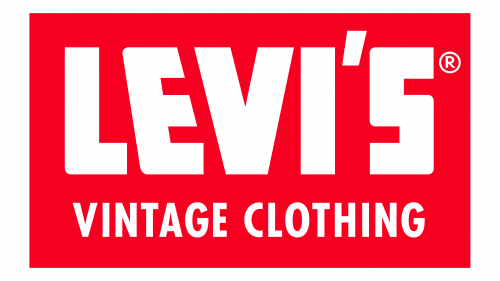The logos of the 1950s, although some consider them a relic of a bygone era, still resonate with today’s graphic designers. The decade can be described as a transformational period that changed the cultural, artistic, and commercial landscapes. After the end of World War II, society embarked on a path of increasing prosperity and cultural awakening, with advances in fields such as architecture, music, and, most notably, design.
During this decade, graphic design, known at the time as “graphic art,” rose to prominence. The practice came to play a critical role in the development of various aspects of everyday life, from consumer products and their packaging to advertising campaigns. The boom of consumerism sweeping the Western world brought branding to the forefront of commercial activity. Creating a memorable brand was no longer an afterthought and took its rightful place in the business sphere.
The 1950s combined cutting-edge design with the laid-back feel of suburban life. This unique combination resulted in an aesthetic that skillfully blended timeless sophistication with a desire for modern innovation. Logos created during this time vividly reflect these cultural and aesthetic trends. The designs often combined minimalist elements and intricate details, resulting in pieces that simultaneously seemed progressive and familiar.
It is this complex dance between the future and the familiar that gives 1950s logos their enduring appeal. They reflected the buoyant spirit of a society imbued with a new sense of confidence and artistic ingenuity. They still serve as a reference point and source of inspiration for those who work in graphic design today. And for those who want to delve deeper into this rich history, there are a range of design tools that allow you to create logos that are as striking as the iconic designs of the 1950s.
Levis
The California Gold Rush of 1848 attracted some 300,000 fortune seekers to the West Coast, but the vast majority of them returned empty-handed, unable to get rich off precious metals. The real beneficiaries were those who catered to the needs of the fever’s participants. Among them were tailors Levi Strauss and Jacob Davis, who soon gained a reputation for producing durable, quality denim suitable for the harsh conditions faced by the workers.
Rather than blend in with the plethora of substandard products, Levi’s adopted essential brand identification techniques from the beginning. Beginning in 1853, the company developed a series of memorable logos to create its unique identity. The iconic red and white logo, introduced in 1954, has become a lasting symbol of quality and durability, setting Levi’s apart from the competition.
Levi’s understood the importance of high-quality materials and craftsmanship, focusing on producing workwear that stood the test of time and harsh environments. This commitment to quality was so determined that it attracted the attention of competing brands, which subsequently began producing similar products, albeit with less success. To counter this and protect its brand identity, Levi’s introduced the red tab, a simple but very effective feature that further set the company apart from its competitors.
The red label became not just a design element but a statement of authenticity and a seal of approval for a brand that has proven itself time and time again. A perfect combination of color and shape, the red label continues to distinguish Levi’s from many competitors even decades later, embodying the brand’s commitment to reliability and quality.
Levi’s was a testament to the fact that a strong brand, backed by quality and thoughtful identity practices, can rise above a multitude of competitors. Although Levi’s initially produced products for a workforce that often worked in harsh and unmerciful conditions, it managed to transcend its utilitarian beginnings to become a fashion brand recognized worldwide. The company’s transformation from a local supplier of rugged workwear to a global fashion icon is a truly remarkable journey, demonstrating the power of fine business acumen combined with an unwavering commitment to quality.
Pepsi
The rivalry between the two biggest soda brands goes beyond just the taste of the beverages. In particular, branding has played an important role in shaping consumer preferences and loyalty. The 1950s were important milestones for Pepsi in the development of its logo that defined its distinction from its main competitor, Coca-Cola.
Prior to this time, the Pepsi brand was very similar to the Coca-Cola brand, mainly using a swirling red font. This changed in the 1950s. Pepsi introduced a new bottle cap designed to evoke a sense of patriotism in the post-World War II era. This design used red, white, and blue, which later evolved into an unmistakable visual language recognized worldwide today.
This period was transformative for Pepsi as it began to differentiate itself from Coca-Cola visually. The advent of a logo in the form of a circle colored in red, white, and blue contributed to a departure from the iconic red font that once closely united the company with its competitors. The visual transformation was not just about aesthetics but a deliberate effort to reflect broader cultural sentiments and shifts.
This adaptability underscores a key principle in design: brands must synchronize with changes in society and culture while retaining the core elements that resonate with their consumers. The evolution of the Pepsi logo is a prime example of how design can be both adaptive and consistent. Over the years, the brand has updated its logo to reflect the changing times but has always retained the elements that define its identity.
This adaptability makes modern designers realize how important it is to maintain a balance between innovation and continuity. Brands need to be flexible and able to adapt to changing consumer expectations and cultural currents while retaining key elements that evoke a sense of familiarity and overall trust.
Braun
In the mid-twentieth century, Braun became a well-known manufacturer of consumer electronics and established itself as a model of innovative design and user-centeredness, much like Apple does today. During this period, Braun became known for its innovative approach to design, characterized by minimalism and high functionality. The company’s 1952 logo, designed by Wolfgang Schmittel, was the era of minimalism.
The 1952 logo was characterized by a simple but effective design, which used geometric shapes and lacked superfluous elements. It embodied the design philosophy of the time when industrial design emphasized usability and durability, which was facilitated by such primitive tools as compasses and rulers. The emblem perfectly matched the attributes of Braun’s early product line, adhering to the principles of simplicity, practicality, and durability.
This unified design ethic has become an integral part of Braun’s corporate identity, reinforcing its reputation and providing a seamless visual and functional experience across multiple touch points. Whether it was kitchen appliances, personal care devices, or audio equipment, every Braun creation was an embodiment of the company’s overall design paradigm.
The approach to minimalism was not limited to visual aesthetics. It manifested itself in the ergonomics of the products, the intuitiveness of the controls, and the user experience, creating a holistic brand perception that is still relevant today. The logo acted as more than just a corporate identifier; it served as a visual manifesto of what the brand stands for. This holistic commitment to simplicity and functionality made Braun a beloved name that redefined the field of consumer electronics in its day.
Ford
The creation of Ford in 1903 was a turning point in the history of the industry. Ford influenced the automobile sector and revolutionized a multitude of products. At the heart of this change was Henry Ford’s landmark statement that a buyer could get a car of any color as long as that color was black. This statement embodied a new ethic of efficiency focused on streamlined production and affordability. The company is an automobile giant, ranked second in the United States and sixth in the world.
Ford’s visual style has also undergone a change. Originally monochrome, the brand switched to a blue color scheme in the 1950s. This change was accompanied by the appearance of the now legendary oval Ford logo with the company name written on it. The updated logo served several purposes: it became synonymous with quality and innovation and further cemented the brand in American culture. Over the years, the logo has remained relatively stable, with only minor changes to it to keep up with design trends.
The success of the Ford brand provides a compelling example of the effective use of visual elements to communicate complex business attributes. The iconic oval shape and inscribed name evoke a sense of tradition and reliability while indicating a forward-thinking approach to technology and design. The blue color scheme further reinforces these ideas, highlighting the brand’s American heritage and penchant for innovation.
NASA
NASA, the National Aeronautics and Space Administration, is often associated with the landmark event of the 1960s, the Apollo 11 moon landing. This organization emerged in 1958 on the initiative of President Dwight Eisenhower. One of the distinctive features of NASA is the iconic “meatball” logo, which has become an integral part of its identity.
The logo was designed by George Neago, an industrial artist who worked at the rocket division of Lockheed Corporation in Palo Alto, California. After winning a design competition, his work became the official emblem of the space agency. Later on, a red vector was added to the emblem, bringing it in line with the patriotic color scheme – red, white, and blue.
NASA’s emblem design broke out of the mainstream at a time when monochrome design was the standard. The logo’s futuristic appeal lies in the combination of a sleek rocket and orbiting stars, embodying the adventurous spirit associated with space exploration. This emblematic design also vividly symbolizes the space race of that era, capturing the imagination and evoking a sense of otherworldliness.
The meatball-shaped logo is not NASA’s only visual identifier. There is also a later version, often referred to as the “worm logo,” which serves as an alternative visual representation. The “meatball logo” has remained enduring and relevant, effectively representing NASA’s mission for over six decades.
The “meatball logo” has come to symbolize NASA and humanity’s broader desire to explore the far reaches of the Earth. In a sense, the logo has gone beyond its original purpose to become a cultural icon that resonates globally.
Playboy
Appearing in 1953, Playboy magazine quickly became a cornerstone of American men’s lifestyle and entertainment. The bold shots of nude and semi-nude models evoked a variety of emotions – shock, outrage, delight – and the magazine had an undeniable impact on societal norms. The magazine had its heyday in the 1970s but experienced a decline in the following years due to market saturation with more explicit magazines.
In March 2020, the publication ceased to exist in physical form, going completely digital. Despite this metamorphosis and declining readership, Playboy maintained its financial clout, thanks in no small part to its recognizable logo. Invented by Art Paul, this iconic bunny symbol has transcended the magazine itself and become a cultural identifier. From clothing decoration to fragrance packaging, the logo’s influence is immense, allowing Playboy to remain a constant in the public consciousness.
Playboy was born at a pivotal moment in American history, a time marked by questioning societal norms and breaking down barriers. The magazine was more than just a repository of racy photos; it addressed socially relevant topics, which often elicited both approval and condemnation. Detractors often criticized the magazine for what they saw as commodifying women, while supporters hailed it as a platform for free expression and discussion of taboo topics.
The bunny head logo is a masterclass in branding, combining simplicity and memorability. Its distinct silhouette captures the brand’s ethos, remaining unchanged for over six decades. This longevity is a testament to the logo’s ability to find common ground with consumers, becoming an enduring cultural symbol regardless of changing tastes and technology.
Although the print editions have been discontinued, the Playboy brand continues to exist, adapting to new consumer preferences and technological shifts. The magazine’s transition to an online format demonstrates its resilience and adaptability, proving that despite the challenges, Playboy continues to attract attention, albeit in different forms. Although some consider the brand to be controversial and even losing relevance, the undeniable impact of its logo retains an indelible mark on the collective imagination.
Campaign for Nuclear Disarmament (CND)
The end of World War II in 1945 did not mean the end of existential threats to humanity. On the contrary, the emergence of the Cold War and the subsequent arms race heightened fears. In Britain, the view was reinforced that nuclear weapons should be completely eliminated without waiting for the Allies or adversaries to make the first move.
A turning point in the development of anti-nuclear sentiment came in 1958 with a large-scale march between London and Aldermaston in Berkshire. The task of creating a compelling visual image for the march fell to Gerald Holtom, a designer and graduate of the Royal College of Art. The result was an unmistakable symbol consisting of three lines enclosed in a circle. The symbol is based on semaphore signals for the letters “N” and “D,” standing for “nuclear disarmament.”
Although the symbol was originally associated with a specific issue, its significance quickly grew. By the 1960s, it was adopted by the anti-war movement in the United States and then became universally associated with peace initiatives. The symbol’s use is not limited to political activism: it has become an icon in the fashion industry, appearing in the collections of major brands such as Gucci and Yves Saint Laurent.
From an emblem of protest associated with unilateral nuclear disarmament, the symbol has evolved into a universal symbol of peace. This journey illustrates the transformative power of design in shaping public consciousness, social movements, and even consumer behavior.
The influence of Holtom’s creation is evident in its enduring relevance and adaptability. Going beyond a specific political message, it has come to epitomize society’s broader desire for peace and the elimination of existential threats. This status emphasizes the enduring and multidimensional impact of design, from social activism to commercial application. Whether on protest posters or fashion runways, the symbol has transcended its original context to become a global icon for a variety of purposes and platforms.
Ostensibly, the symbol has reached a level of cultural saturation that few designs have. While it originally served as a visual call to combat the proliferation of nuclear weapons, it now fulfills a broader role, embodying different but interrelated aspirations. These range from ending armed conflict to broader humanistic ideals, transforming the symbol into a complex tapestry of socio-political and cultural messages. This evolution emphasizes design’s ability to serve not as a static message but as a fluid language that adapts and resonates across time and space.
CBS
CBS, one of the “Big Three” U.S. broadcast networks, has a history spanning nearly a century, having begun as a broadcast network in 1927. By 1951, the CBS “eye” logo appeared. It was designed by William Golden, who at the time served as creative director of the network’s advertising and sales promotion department. The logo design was inspired by the hexagonal “all-seeing eye” symbols often found on Shaker barns in Pennsylvania and Dutch country, which were used to ward off evil spirits.
The symbol quickly gained recognition for its minimalistic yet powerful imagery. Unique, simple, and direct, the eye serves as a metaphor for CBS’ desire to “look at the world.” Executed in a monochromatic palette, it further emphasized the clarity and directness of its message. Many design connoisseurs and experts have praised its merits, noting that its straightforward design embodies the essence of modern branding while being easily adaptable to different media and platforms.
One of the aspects that elevate the CBS eye logo to an iconic design is its versatility. Originally conceived as a campaign symbol emphasizing the channel’s focus on world news, its flexibility has made it the official emblem of the entire network. The design’s adaptability is evident in its consistent presentation across a variety of media, including globally syndicated series such as MAS*H and NCIS.
The relevance of the design stems from several qualities. First, the simplicity of the logo makes it instantly recognizable, which is especially important in the visual overload of modern media. Second, the uniqueness of the logo allows it to stand out amongst the many competing images and symbols. Third, its timeless quality means that even after 72 years, it shows no signs of obsolescence.
The stability of the CBS logo and the consistency of its design since its introduction in 1951 serve as indicators of its success and timelessness. In a world where branding is often redesigned to stay relevant, the CBS logo’s continued relevance illustrates the power of strong, simple, and universal design principles. Its continued presence in American and global media is a testament to its ability to adapt while retaining its original essence, a true hallmark of iconic design.
Pan Am
Founded in 1927 by two U.S. Air Corps veterans, Pan American World Airways, known as Pan Am, was a pioneer in commercial aviation. The airline was the first airline from the United States to operate international flights, connecting the world in an unprecedented way. Pan Am was an innovator, introducing jet aircraft and computer reservation systems to the aviation world, thereby modernizing air travel and setting standards that were adopted throughout the industry.
The company ceased operations in 1991, but its impact on aviation history and 20th-century American culture is undeniable. Part of that enduring legacy is its logo, a timeless work of design art. Created in 1955 by Charles Foreberg, Edward Barnes, and Ivan Chermayev, the logo features a stylized round globe and is an example of mid-twentieth-century design.
The era of the 1950s was marked by rapid global change and technological advancement, which was fully reflected in the Pan Am logo. Its angular, sharp serifs were a departure from the complex and subtle design of the pre-war Art Deco period, instead aligning with the modernist trend prevalent in the design and architecture of the time. The shift to clean lines, angular serif fonts, and a bold, bright blue color scheme symbolized the beginning of new life and signaled the pervasive optimism of the era. It was an era when people began to see the world as increasingly interconnected, thanks in part to the development of air travel.
The globe depicted in the logo, devoid of borders, symbolized the convergence of the world. The design spoke of a new era in air travel, and its meaning was so strong that it remained virtually unchanged even decades after the initial redesign. It resonated deeply with consumers and became a corporate and cultural symbol.
The Pan Am logo and its pioneering approaches in the aviation industry serve as a learning experience for marketers and design enthusiasts alike. The brand has managed to capture the spirit of an era marked by rapid technological development and societal change. It is a lesson in effective branding and a window into a pivotal time in American and world history. Pan Am’s legacy, embodied in its iconic logo and pioneering initiatives, continues to be a source of interest and admiration.
Why classic logos matter
The design field of the 1950s was markedly different from the modern era, largely devoid of the media and global networking influences that define contemporary creativity. Products, branding, and logos of the time often appeared in confined spaces, making their designs unique, even when compared to modern creations.
Unlike modern design, which sometimes suffers from global homogeneity, the 1950s showcased many designs that still stand out for their originality. This originality is a consequence of a less connected world and a testament to the clear and uncluttered vision of the designers of the time. The absence of a pervasive digital culture ensured that creations were not diluted by global trends, preserving their uniqueness.
Another hallmark of this era was the focus on basic yet powerful design principles. Aspects such as simplicity and consistency were emphasized. In the era of a lack of digital technology, designers relied on primitive tools for their work. The lack of modern technology required a hands-on approach, including hand drawing and manual production methods. This added an element of craftsmanship, giving each design an individuality that is rarely seen in today’s mass computerized production.












